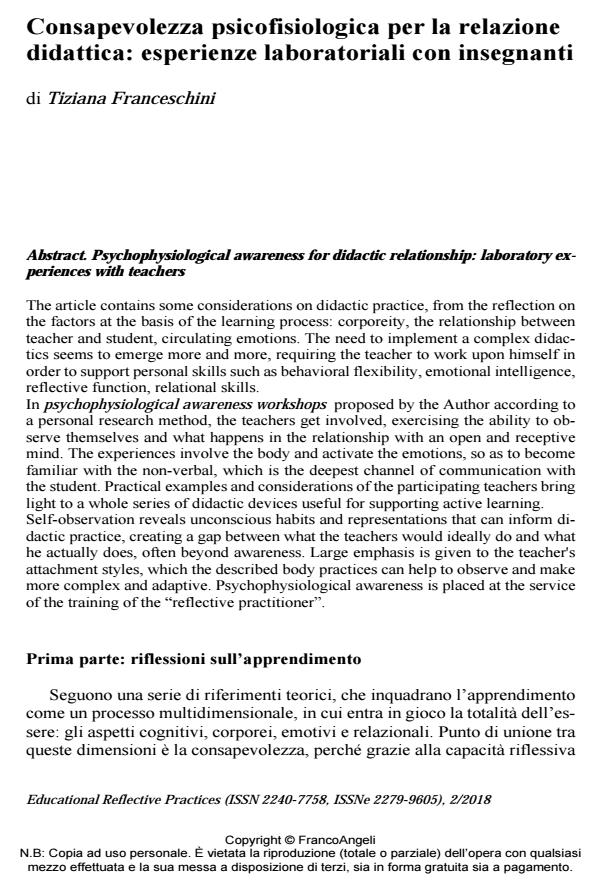Psychophysiological awareness for didactic relationship: laboratory experiences with teachers
Journal title EDUCATIONAL REFLECTIVE PRACTICES
Author/s Tiziana Franceschini
Publishing Year 2019 Issue 2018/2
Language Italian Pages 31 P. 170-200 File size 254 KB
DOI 10.3280/ERP2018-002012
DOI is like a bar code for intellectual property: to have more infomation
click here
Below, you can see the article first page
If you want to buy this article in PDF format, you can do it, following the instructions to buy download credits

FrancoAngeli is member of Publishers International Linking Association, Inc (PILA), a not-for-profit association which run the CrossRef service enabling links to and from online scholarly content.
The article contains some considerations on didactic practice, from the reflection on the factors at the basis of the learning process: corporeity, the relationship be-tween teacher and student, circulating emotions. The need to implement a complex didac-tics seems to emerge more and more, requiring the teacher to work upon himself in order to support personal skills such as behavioral flexibility, emotional intelligence, reflective function, relational skills. In psychophysiological awareness workshops proposed by the Author according to a personal research method, the teachers get involved, exercising the ability to ob-serve themselves and what happens in the relationship with an open and receptive mind. The experiences involve the body and activate the emotions, so as to become familiar with the non-verbal, which is the deepest channel of communication with the student. Practical examples and considerations of the participating teachers bring light to a whole series of didactic devices useful for supporting active learning. Self-observation reveals unconscious habits and representations that can inform di-dactic practice, creating a gap between what the teachers would ideally do and what he actually does, often beyond awareness. Large emphasis is given to the teacher’s attachment styles, which the described body practices can help to observe and make more complex and adaptive. Psychophysiological awareness is placed at the service of the training of the "reflective practitioner".
Tiziana Franceschini, Consapevolezza psicofisiologica per la relazione didattica: esperienze laboratoriali con insegnanti in "EDUCATIONAL REFLECTIVE PRACTICES" 2/2018, pp 170-200, DOI: 10.3280/ERP2018-002012